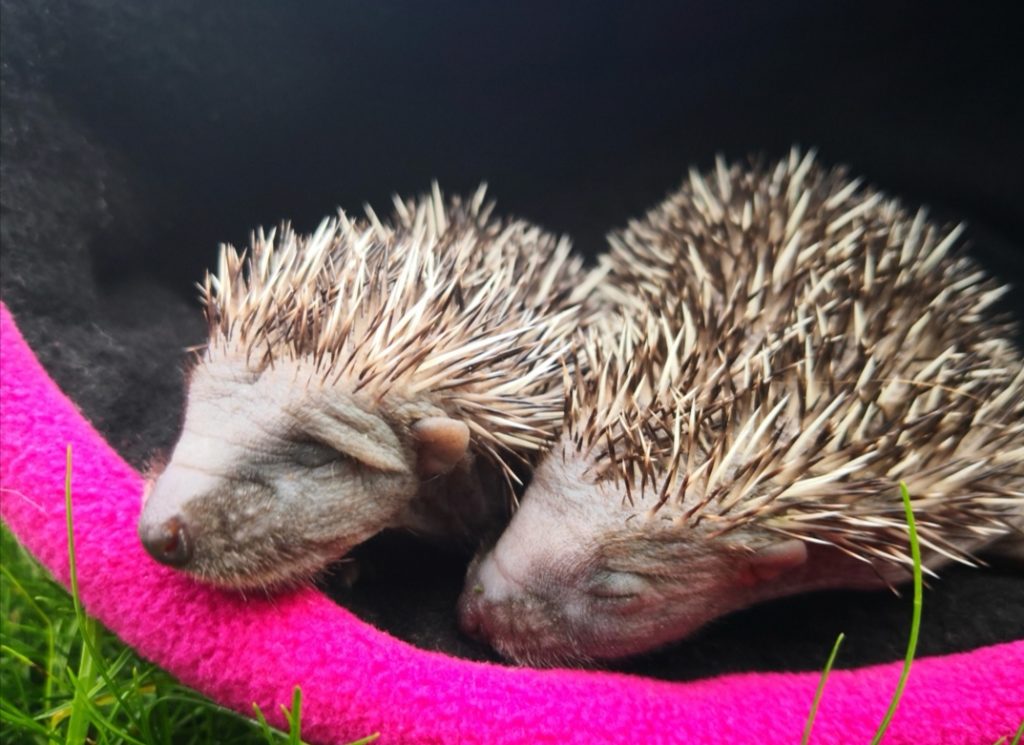Sick or injured hedgehog?
What to do if you find a hedgehog that looks unwell
If you spot a hedgehog at night and it looks healthy then the best thing you can do is leave it alone. Hedgehogs are wild animals and so can get very easily stressed by human contact. If the sighting is during the day – it could be a warning sign that all is not well. However, there are some exceptions, nest disturbance, females nest building in preparation for young to be born or feeding while young are asleep being some. Those hedgehogs will generally be moving quickly, appear well and only out for short periods of time. Monitor from a distance to ensure no problems develop and if in doubt call the British Hedgehog Preservation Society on 01584 890 801. However if you find a hedgehog staggering around, lying still (not in a nest), with flies around it or obviously sick or injured be it day or night, it needs urgent help.
Sick, injured and orphaned hedgehogs are very susceptible to hypothermia. Staggering is a sign of hypothermia and so is ‘sunbathing’ as they spread themselves out in the sun in an attempt to get some heat into their bodies. If you find a hedgehog in this state, they need your help quickly.
Use gardening gloves or a towel to handle the hedgehog, then take it inside in a box and place a well-wrapped hot water bottle underneath it. Fill the bottle with hot tap water (not boiling) – you should be able to hold your hand comfortably on the bottle when wrapped. It’s really important that the bottle is not allowed to go cold or it will do more harm than good, so change the water frequently and make sure there is room in the box for the hedgehog to get off the bottle if it gets too warm.
Gently cover the hedgehog with an old towel or fleece to make it feel more secure and offer some meaty cat or dog food and water. Once you have the hedgehog settled somewhere quiet indoors, call the British Hedgehog Preservation Society (BHPS) on 01584 890 801.

Hoglets
At around 4 weeks old, baby hedgehogs (hoglets) start to venture out of the nest with their mothers. Some hoglets, even newborns, whose mother has been killed will venture out of the nest in search of her. You are likely to spot these out in the day; they may be squeaking and there may be flies around them. These hoglets need rescuing as soon as possible because if the hoglets are left too long they may get maggots on them which will eat them alive.
The hoglets should be handled using gloves and placed on a covered warm hot water bottle in a box indoors then covered with a small towel. If you only find one do have a look for more because there are likely to be siblings in the same area. Once settled, call the British Hedgehog Preservation Society (BHPS) for advice.
Dead hedgehogs: can I find out what happened?
Wildlife veterinarians on the Garden Wildlife Health project are studying the causes of hedgehog disease in the wild. Please report sightings of sick or dead hedgehogs through the online reporting system here.
During the breeding season, continue to check the area where the dead hedgehog was found (if safe for you to do so) for at least 3-4 days for any orphans. Listen out for the squeak of a bird but at ground level as this may be an orphaned hoglet’s distress call.

